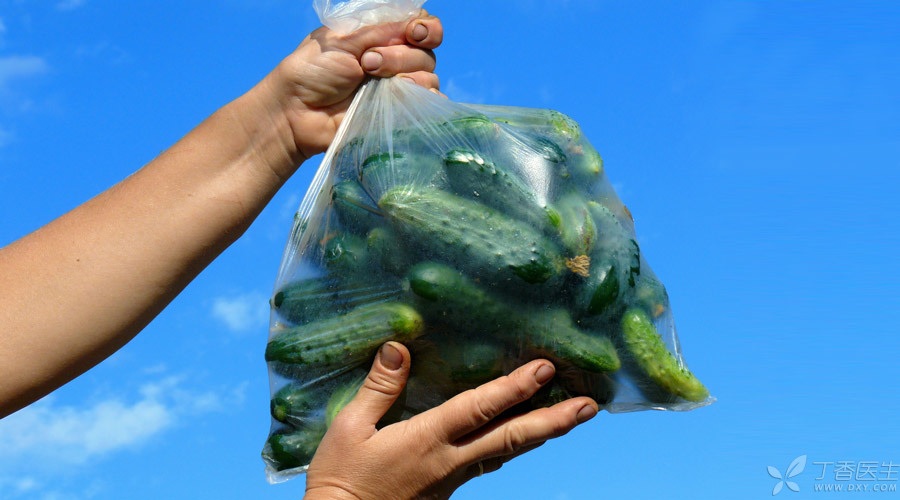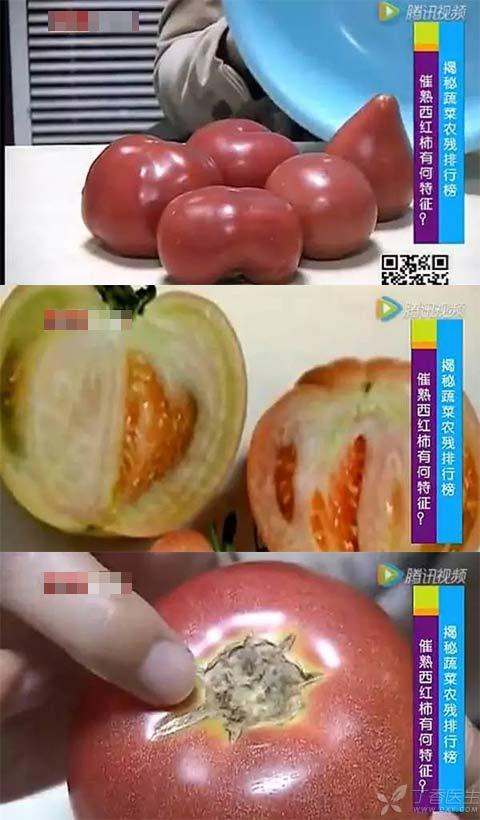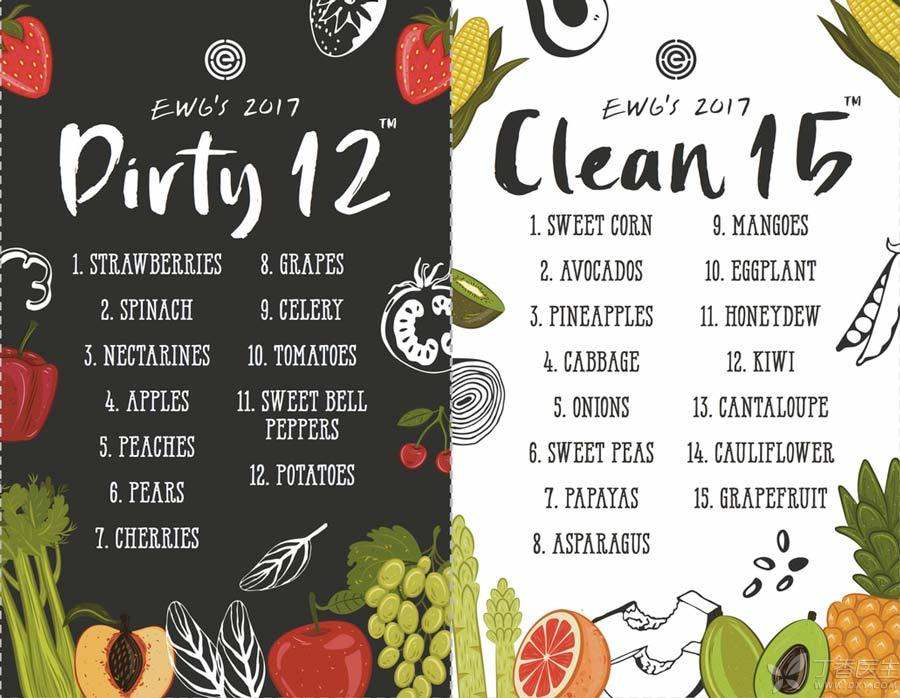
The “King of Poisons” vegetable made by a TV station turned out to be it! At present, a large number of listed! The program of keeping in mind the method of detoxification has attracted a lot of attention.
The names of tomatoes, Chinese cabbage, cauliflower, cucumber and water spinach are all impressively listed in the [King of Poisons] list.
Water spinach is the vegetable that absorbs pesticides and heavy metals the most. Foreign countries use water spinach to purify soil and no one eats it.
Cucumbers with small yellow flowers on the top are all pesticide-treated.
… …
Really? Simply put:
The bullshit is too concentrated to spit out one by one. It is suggested that everyone ignore it directly.
Why do you say this program [bullshit is too focused]?
Because the program said pesticide residues, but it was not based on the results of pesticide residues detection at all, but speculated that plant hormones were used in these vegetables and fruits.

It must be said that [plant hormone] has what’s fault. I’m afraid… it’s the same as many people who have been wronged by their parents.
The somebody else originally called [plant growth regulator] well, clearly like pollen does not make people pregnant, it will not produce any hormone effect on the human body, and it will bear the name of [toxic] for no reason.
Let’s go on to talk about [pesticide residues]. Are vegetables and fruits [poisonous] and [dirty]?
Is there really a list of [dirtiest fruits and vegetables]?
Also… Really. Not surprisingly?
EWG, an environmental protection organization in the United States, has appeared in many articles. They do publish a ranking of pesticide residues every year.

But! The important thing is always but.
This is actually a misleading list.
EWG is neither a government administrative department nor an academic institution, but a non-governmental organization advocating environmental protection.
Their [12 dirtiest fruits and vegetables] ranking is based on the U.S. Department of Agriculture’s Pesticide Residue Detection Database. The latest U.S. Department of Agriculture report results:
No pesticide residues were detected in 15% of the samples, and the content of pesticide residues in 99% of the samples was far lower than the standard set by the Environmental Protection Agency (EPA). However, the samples with pesticide residues exceeding the standard only accounted for 0.53% of the total number of samples.
This is clearly saying that the pesticide residues in conventional fruits and vegetables are not worth worrying about.
However, EWG has made a completely opposite interpretation of the same data.
Detection of pesticide residues ≠ pesticide residues exceeding the standard
EWG does not recognize the basic toxicological concept of “talking about toxicity without dose is playing rascal”, nor does it recognize the common sense that “below EPA’s pesticide residue standard, health will not be endangered”.
Moreover, their appraisal is only based on the type of [detected pesticide residues], not the content of pesticide residues.
What they call [how many kinds of pesticide residues are contained in a vegetable and fruit] is not that many kinds are contained in one sample, but all pesticides detected in all samples [the total number of kinds].
Let’s say that the first place on the [King Pesticide] list is very innocent strawberries.
For example, two pesticides A and B were detected in one strawberry sample, B and C were detected in another strawberry sample, and D and E were detected in another strawberry sample, so this is even five pesticide residues in strawberries.
Look, do you want to hit people?
Then, some media continued to interpret [the dirtiest 12] as [fruits and vegetables with the highest amount of agricultural residues], adding more mistakes.
The eye-catching ranking of [dirtiest fruits and vegetables] seems to imply consumers to stay away from these fruits and vegetables? Is it true that you shouldn’t eat it?
In the [FAQ Q&A] section on EWG’s website, the answer is…
Eat your vegetables and fruits at ease. Ensure that your diet is rich in vegetables and fruits, and the health benefits far exceed the risks of pesticide residue intake.
It’s really a little unexpected. They didn’t continue to mislead and said a fair word.
Just don’t trust pesticide residues, how to eat?
People’s worries about pesticide residues are understandable. They think that there are [excessive pesticide residues] in fruits and vegetables, so they should do some what [removal].
However, if the pesticide residues do not exceed the standard, then there is no need to struggle with how to remove them.
In the articles related to fruits and vegetables [the king of poison], strawberries, leeks and spinach are the most frequent ones. But what is the truth?
For example, strawberries, many people will feel that the skin like strawberries is potholed and it must be easy to leave dirty things.
In fact, strawberries rarely [exceed the standard of pesticide residues].
The news of “strawberry pesticide residues exceeding the standard”, which had been hotly debated for 15 years, was later proved to be impossible in theory and unreliable in practice. Even large-scale tests organized by the government have never been found.
It’s fake news! It’s all fake news!
Go to regular channels to buy fruits and vegetables, so that you don’t have to worry about pesticide residues at all.
What if you are not at ease with the words [regular channels]?
There are 3 unique tricks to go to pesticide residues.
1. Rinse and scrub under tap water for more than 30 seconds.
Too much trouble? Who makes you feel uneasy about pesticide residues? Rubbing for 5 minutes is more than 2 hours.
For example, when cleaning strawberries, do not cut, do not remove pedicles and leaves, and rinse with running water is enough.
Other more complicated and sounding more advanced cleaning methods, what brine, alkaline water, flour water and ozone ultrasonic compound enzyme, only make you feel more at ease psychologically and may not be of much use.
Step 2 Eat after peeling
If there are pesticide residues, they are basically on the skin. Many people are reluctant to give up [the nutrition on the skin] (or they may not be able to peel it). In fact, there is not much. It is up to them to decide whether to peel it or not.
It’s really tangled, you can… throw a coin to decide.
Step 3 Heat before eating
Generally, heating can promote pesticide degradation.
Most vegetables, whether spinach, leeks or cabbage, we eat them when they are cooked. It is a good method to let the vegetables go into the water and scald them and take them out without damaging nutrition.
Of course, strawberries, or choose the first method.
As for this [pesticide news], which is turned out several times a year, perhaps there is a little advantage… are the prices of vegetables and fruits getting cheaper?
